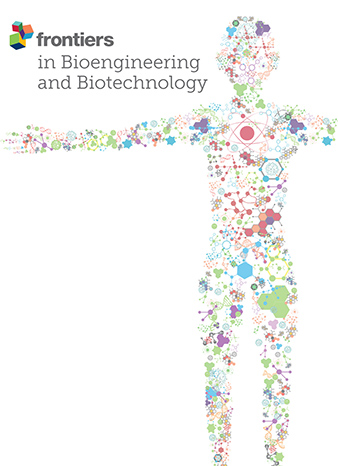病例报告:在不影响颊前庭深度的情况下,将腭“C”形脊裂的颊移位皮瓣用于腭骨增强:附3例报告。
IF 4.3
3区 工程技术
Q1 BIOTECHNOLOGY & APPLIED MICROBIOLOGY
Frontiers in Bioengineering and Biotechnology
Pub Date : 2025-07-09
eCollection Date: 2025-01-01
DOI:10.3389/fbioe.2025.1594325
引用次数: 0
摘要
由于其致密的结缔组织结构,腭瓣的冠状推进是不可行的,使得单部位腭骨缺损的重建尤其具有挑战性。本病例报告描述了一种创新技术的有效性和疗效结合颊移位皮瓣和腭“C”型脊裂一起在上颌骨后增骨手术。所描述的方法不仅有助于在不损害前庭深度的情况下获得可靠的骨再生,而且还令人惊讶地增加了水平轮廓。本文章由计算机程序翻译,如有差异,请以英文原文为准。
Case Report: Buccal shifted flap with palatal "C" shape ridge split to facilitate the palatal bone augmentation without compromising the buccal vestibular depth: Report on three cases.
Due to its dense connective tissue structure, the coronal advancement of the palatal flap is not feasible, making the reconstruction of single-site palatal bone defects particularly challenging. This case report describes the effectiveness and efficacy of an innovative technique combining the buccal shifted flap and palatal "C"-shaped ridge split together during bone augmentation procedures in the posterior maxilla. The described approach not only facilitates obtaining reliable bone regeneration without compromising the vestibular depth, but also surprisingly increases the horizontal contour.
求助全文
通过发布文献求助,成功后即可免费获取论文全文。
去求助
来源期刊

Frontiers in Bioengineering and Biotechnology
Chemical Engineering-Bioengineering
CiteScore
8.30
自引率
5.30%
发文量
2270
审稿时长
12 weeks
期刊介绍:
The translation of new discoveries in medicine to clinical routine has never been easy. During the second half of the last century, thanks to the progress in chemistry, biochemistry and pharmacology, we have seen the development and the application of a large number of drugs and devices aimed at the treatment of symptoms, blocking unwanted pathways and, in the case of infectious diseases, fighting the micro-organisms responsible. However, we are facing, today, a dramatic change in the therapeutic approach to pathologies and diseases. Indeed, the challenge of the present and the next decade is to fully restore the physiological status of the diseased organism and to completely regenerate tissue and organs when they are so seriously affected that treatments cannot be limited to the repression of symptoms or to the repair of damage. This is being made possible thanks to the major developments made in basic cell and molecular biology, including stem cell science, growth factor delivery, gene isolation and transfection, the advances in bioengineering and nanotechnology, including development of new biomaterials, biofabrication technologies and use of bioreactors, and the big improvements in diagnostic tools and imaging of cells, tissues and organs.
In today`s world, an enhancement of communication between multidisciplinary experts, together with the promotion of joint projects and close collaborations among scientists, engineers, industry people, regulatory agencies and physicians are absolute requirements for the success of any attempt to develop and clinically apply a new biological therapy or an innovative device involving the collective use of biomaterials, cells and/or bioactive molecules. “Frontiers in Bioengineering and Biotechnology” aspires to be a forum for all people involved in the process by bridging the gap too often existing between a discovery in the basic sciences and its clinical application.
 求助内容:
求助内容: 应助结果提醒方式:
应助结果提醒方式:


